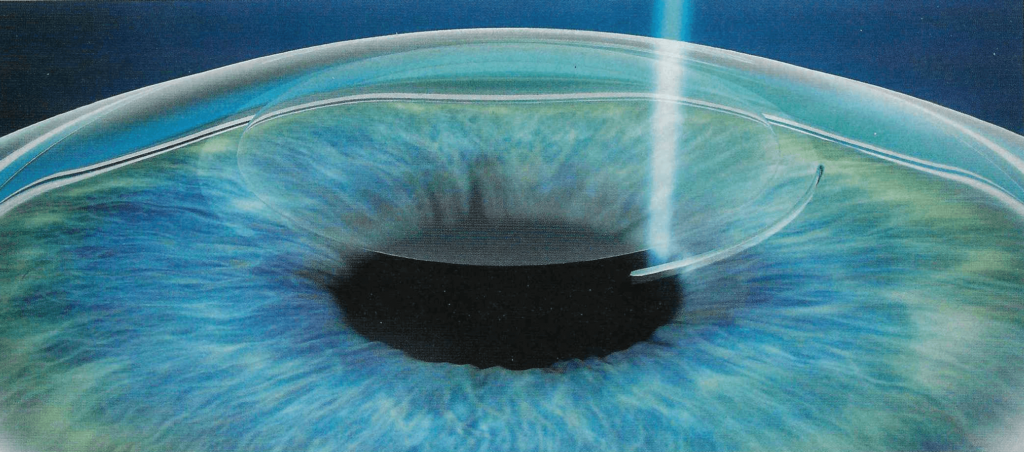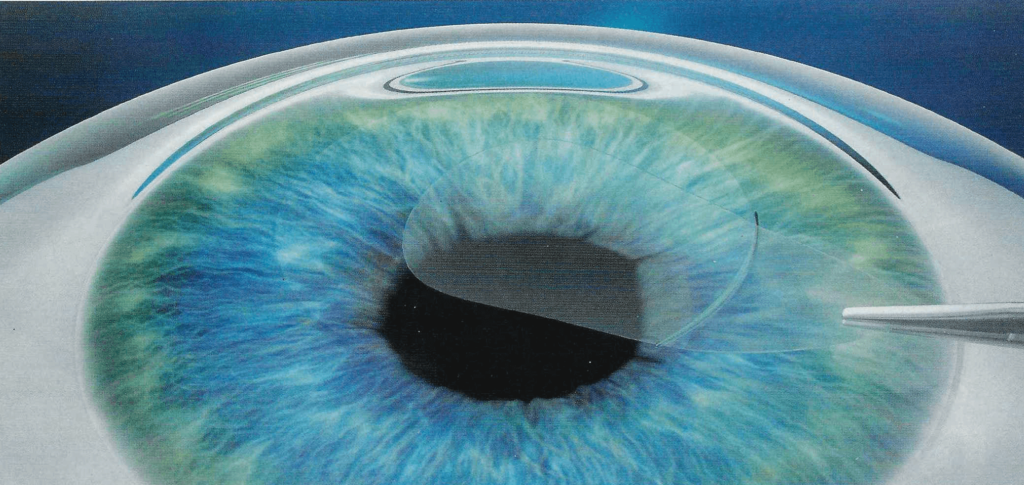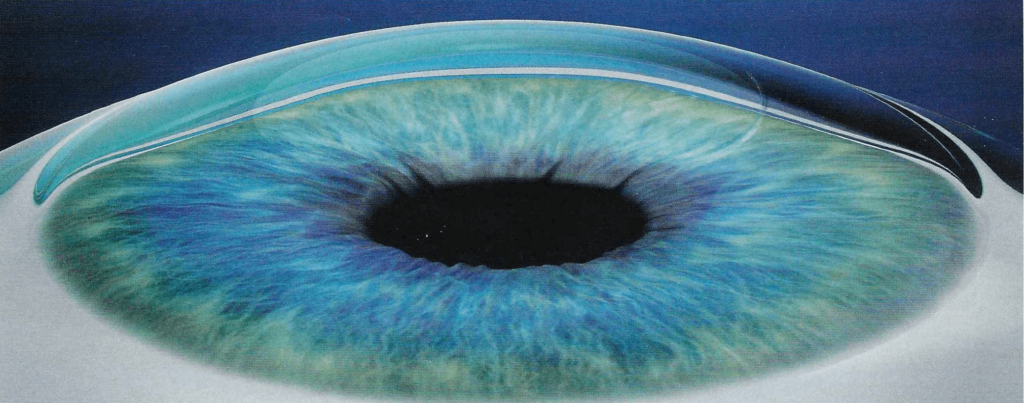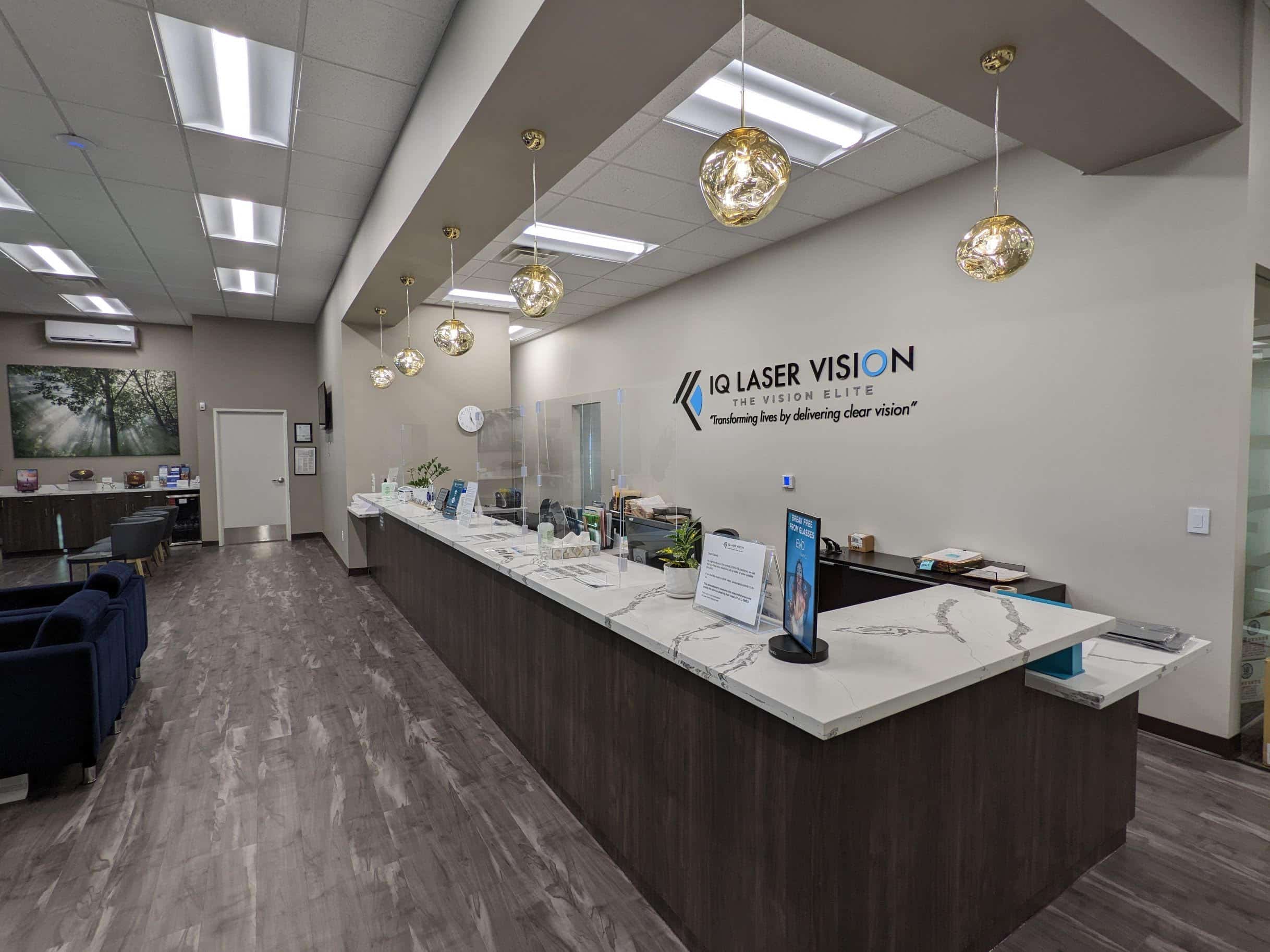Do you have astigmatism? It’s a common refractive error but that doesn’t always translate into everyone knowing what it means. More importantly, not everyone knows if having astigmatism can stand in your way of having a vision correction procedure like SMILE.
Keep reading to learn the truth about SMILE and astigmatism!
What is astigmatism?
Before we can do a deep dive into how SMILE works with astigmatism, it’s helpful to understand what astigmatism is! Astigmatism is a refractive error. Other refractive errors include nearsightedness and farsightedness.
So, what’s a refractive error? To put it simply, a refractive error means that the shape of your eye doesn’t bend light the right way. This results in a blurry image and other visual distortions.
Astigmatism is a refractive error that occurs when the cornea is closer in shape to a football. The eye should be round like a basketball.
When it’s more of a football shape, your vision will be blurry when you look at things that are up close and far away. If you have astigmatism, you may have other refractive errors like nearsightedness and farsightedness as well.
What is SMILE?
SMILE is a permanent vision correction procedure that can correct nearsightedness and astigmatism. Don’t be fooled by the acronym, because SMILE is all about correcting your vision!

Although there are similarities to LASIK, like reshaping the cornea, it is not the same as LASIK. In fact, SMILE has several advantages that often make it a better fit if you’ve found out you don’t qualify for LASIK.
This includes if you have dry eye syndrome and if you lead an extremely active lifestyle that LASIK may not support.
For individuals that don’t qualify for SMILE, IQ Laser Vision also offers MICROSmile, which can safely treat higher prescription ranges (-7 to 10 diopters) and drier eyes. Developed by IQ Laser Vision’s own Dr. Lin, MICROSmile is an almost identical procedure to SMILE that is better for patients with higher prescriptions, thinner corneas, or dry eyes that weren’t good SMILE candidates.
Can I get SMILE if I have astigmatism?
If your astigmatism falls into the treatment range that’s acceptable for SMILE of up to 3 diopters, absolutely!
What does a good SMILE candidate look like?
Because SMILE is a surgical procedure, you must first qualify for it before you can undergo SMILE. To be a good SMILE candidate, you’ll need to meet the following:

- You must be at least 18 years old to ensure your eyes have stopped developing and changing
- You need to have a prescription that hasn’t changed in at least a year or more
- You need to have healthy eyes and corneas
- You should be nearsighted between -1 and -10 diopters
- You can only have up to 3 diopters of astigmatism
- You can’t be farsighted, as SMILE is only FDA approved to treat nearsightedness and astigmatism at this time
- You have realistic expectations when it comes to what SMILE can do for correcting your vision
Keep in mind that these are only some of the factors that go into SMILE candidacy. If you’re interested in SMILE, there’s one way and one way only to find out if you qualify for this life-changing procedure: schedule a SMILE consultation at IQ Laser Vision!
What is getting SMILE like?
Due to a certain film franchise, vision correction procedures have a reputation that they don’t deserve. SMILE especially doesn’t deserve this, because again, it’s really nothing like LASIK at all. So, what is getting SMILE like?
It’s quick and easy because it’s only three short steps! Before the procedure starts, you’ll have your eyes numbed, because nobody wants you to feel anything, including pain! After you’ve received numbing eye drops, your surgeon will do these three things:

1. They will create what’s known as a lenticule. A lenticule is about the size of a contact lens. After creating the lenticule, they’ll also create a small incision, with both created inside of the intact cornea.

2. Once your surgeon creates the lenticule, they then remove it through the incision (which is smaller than the incision that’s created during LASIK). The smaller incision size is important because it allows for less disruption on the eye’s surface. For patients, this means a shorter recovery and not having to worry about side effects like dry eye.

3. When the lenticule is removed, this is what reshapes your cornea and corrects refractive errors like astigmatism and nearsightedness.
You may not believe it, but SMILE only takes a few minutes to complete. The laser that reshapes your cornea takes 30 seconds at most! Pretty wild, right?
And for patients with astigmatism, SMILE is a great choice. With a faster recovery than LASIK, you’ll be able to get back to the things you love before you know it!
How long does it take to recover after having SMILE?

Since the incision that’s created during SMILE doesn’t need any stitches, it heals on its own. This is part of the reason why SMILE has a short and easy recovery period.
Many patients that undergo SMILE are able to get back to their day-to-day activities a day or two after the procedure. For the best results, take it easy on the day that you have SMILE.
Your vision may be noticeably better the day that you get SMILE, or it may take a few days to a week for your sight to stabilize. Both are normal, as it can take a little time for your eyes to get used to their new way of looking at the world!
Most patients can return to work the day after they have SMILE. If you work in front of a computer or you have concerns about going back to work immediately, talk to your surgeon to come up with a post-SMILE plan.
As long as you take the prescription eye drops and follow all instructions that your eye doctor gives you, you’ll have a great SMILE recovery experience! What’s not to love about finally getting to experience visual freedom from glasses and contact lenses for the rest of your life?
Think that SMILE could be the vision correction procedure that you’ve been looking for? It’s time to find out for sure!
Schedule your SMILE consultation at IQ Laser Vision, the #1 SMILE Laser Vision Center with locations throughout California and Houston, TX.
What do you have to lose, except your astigmatism and dependence on glasses and contacts?























